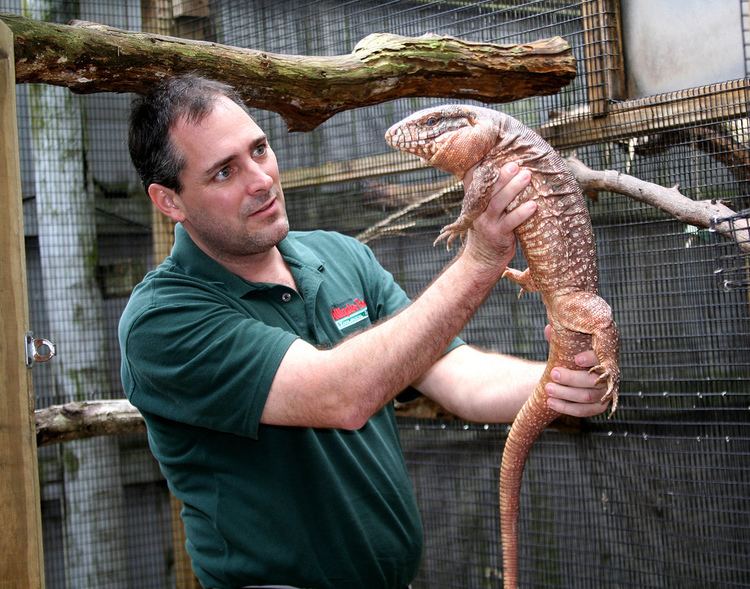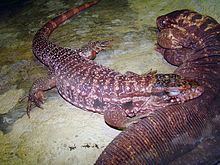Kingdom Animalia Order Squamata Family Teiidae Scientific name Tupinambis rufescens Rank Species | Phylum Chordata Suborder Lacertilia Genus Tupinambis Higher classification Tupinambis | |
 | ||
Similar Argentine black and, Tupinambis, Reptile, Gold tegu, Blue tegu | ||
The Argentine red tegu, (Tupinambis rufescens), often referred to as simply red tegu, is one of the largest species of the Tupinambis lizards. As its name suggests, the Argentine red tegu is found in western Argentina, Bolivia as well as Paraguay. They are highly intelligent reptiles and have been known to form bonds with their owners in captivity. Some, such as MacGyver the Lizard, have also been known to come when called by name.
Contents

Appearance

As hatchlings, most red tegus display little, if any, red coloration. They are typically brownish-green with black strips across their width and several broken white stripes down their length. They develop red coloration as they mature; males usually brighter than females. Adult females can reach 91 cm (just under 3 ft) in length. Males are significantly larger, reaching up to 140 cm (4.5 ft) and developing large jowls.
Growth

The red tegu grows rapidly, typically reaching maturity in two to three years. It is not uncommon for well-fed juveniles to experience growth spurts of more than an inch per week.
Diet

The red tegu is a very opportunistic feeder. Wild specimens will eat a variety of plant and animal matter: fruits, vegetables, insects, rodents, birds, and fish. Red tegus raised in captivity will often be more picky eaters, especially as juveniles, and may prefer a diet of mostly meat.
